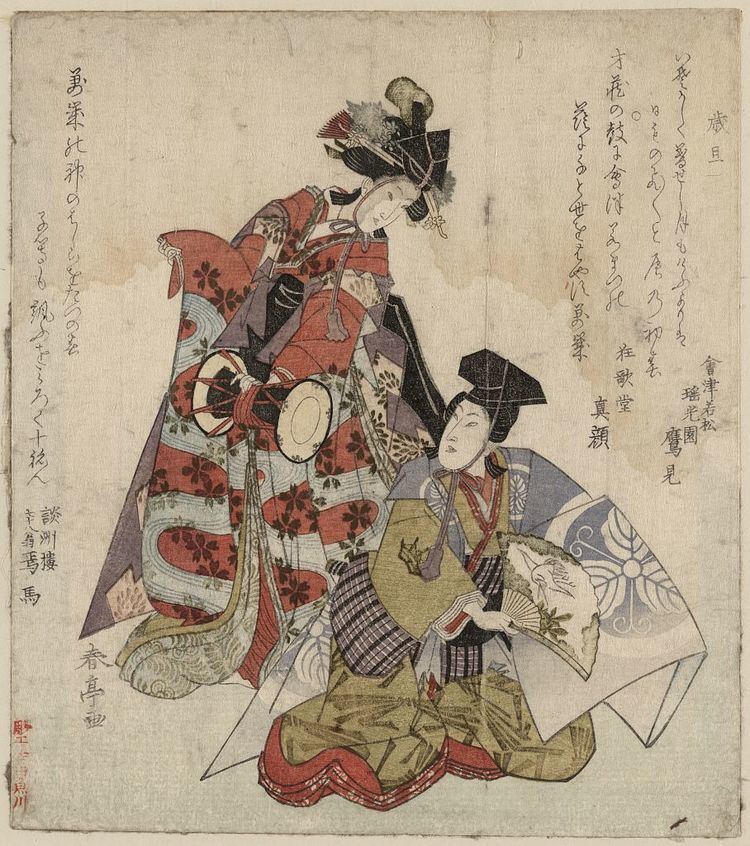Written by unknown | Category 4th — miscellaneous Time 7th Century | |
 | ||
English title The Damask DrumThe Twill Drum Characters maeshite old gardenerai attendantwaki court officialtsure Imperial Consortnochijite phantom Similar Izutsu, Matsukaze, Atsumori, Dōjōji, Hagoromo | ||
Aya no tsuzumi
Aya no Tsuzumi (綾鼓, "The Damask/Twill Drum") is a Japanese Noh play by an unknown author which depicts the evil consequences of unrequited desire.
Contents
Ari ben shabetai aya no tsuzumi chamber opera
Title
The word aya means twill, but the first English translation by Arthur Waley used the word damask, and this choice is almost invariably preserved by later writers in English.
Plot
The gardener at the Palace of Chikuzen has fallen in love with the Imperial Consort. She sends a message to the gardener that she will meet him at the pond if he beats the drum which she has placed in a tree in the garden. He tries but the drum has been made with twill (aya) and so cannot sound. Realising that he has been made a fool of, the gardener drowns himself in the pond and returns as an evil ghost who torments the princess.
Influence
Japanese playwright Yukio Mishima wrote his own adaptation of the play in his collection Kindai Nogakushu in 1957.
